I have problem in my code. I'm using the registration form which comes with MVC5 , I added a field "Role" as a Dropdownlist to assign a role to the user while creating a new user. like in the below image:

Now in order to do that, I modified the "RegisterViewModel" and added the following properties:
public IdentityRole Role { get; set; }
[Required]
[Display(Name = "Roles List")]
public IEnumerable<IdentityRole> RolesList { get; set; }
In "AccountController", I changed the Register action, that gets the registration form, to become like this:
// GET: /Account/Register
[AllowAnonymous]
public ActionResult Register()
{
var _context = new ApplicationDbContext();
var roles = _context.Roles.ToList();
var viewModel = new RegisterViewModel
{
RolesList = roles
};
return View(viewModel);
}
In the view "Register.cshtml" I added this Dropdownlist to load roles in the view and to post the role to the controller:
<div class="form-group">
@Html.LabelFor(m => m.Role.Id, new { @class = "col-md-2 control-label" })
<div class="col-md-10">
@Html.DropDownListFor(m => m.Role, new SelectList(Model.RolesList, "Name", "Name"), "Select Role", new { @class = "form-control" })
</div>
</div>
in the Register controller, in the the registration form post, I added this
// POST: /Account/Register
[HttpPost]
[AllowAnonymous]
[ValidateAntiForgeryToken]
public async Task<ActionResult> Register(RegisterViewModel model)
{
if (ModelState.IsValid)
{
var user = new ApplicationUser() { UserName = model.UserName , centerName = model.centerName };
var result = await UserManager.CreateAsync(user, model.Password);
if (result.Succeeded)
{
var role = new IdentityRole(model.Role.Name);
//I added this line to store the user and its roles in AspNetUserRoles table:
await UserManager.AddToRoleAsync(user.Id, role.Name);
await SignInAsync(user, isPersistent: false);
return RedirectToAction("Index", "Home");
}
else
{
AddErrors(result);
}
}
Now when I try to register the user and post the form, I get following error:
Server Error in '/' Application.
Value cannot be null.
Parameter name: items
Description: An unhandled exception occurred during the execution of the current web request. Please review the stack trace for more information about the error and where it originated in the code.
Exception Details: System.ArgumentNullException: Value cannot be null.
Parameter name: items
Source Error:
Line 41: @Html.LabelFor(m => m.Role.Name, new { @class = "col-md-2 control-label" })
Line 42: <div class="col-md-10">
Line 43: @Html.DropDownListFor(m => m.Role, new SelectList(Model.RolesList, "Name", "Name"), "Select Role", new { @class = "form-control" })
Line 44: </div>
Line 45: </div>
Source File: c:..\TransactionsSystem\Views\Account\Register.cshtml Line: 43
I tried different solutions to solve it, but nothing worked, can anybody please help or advise?